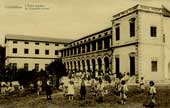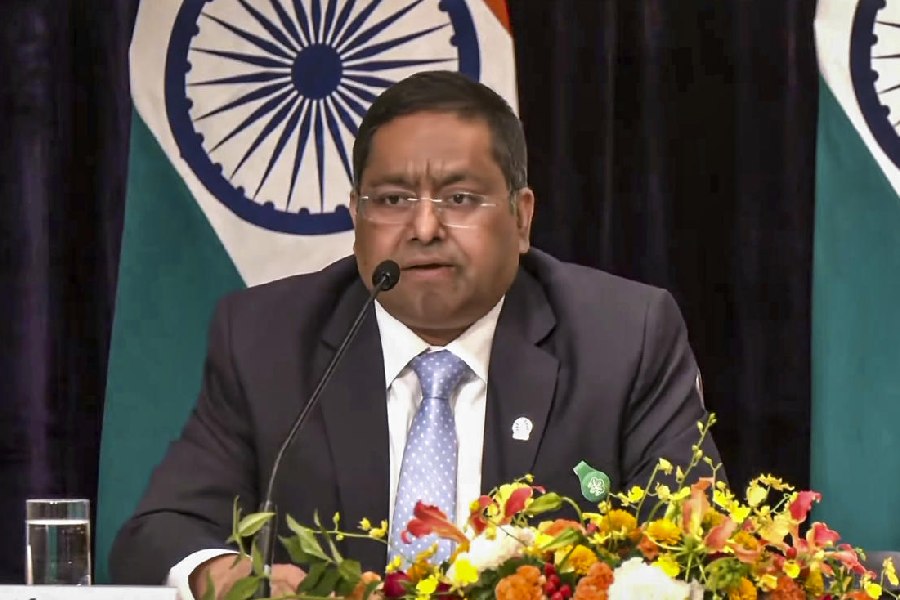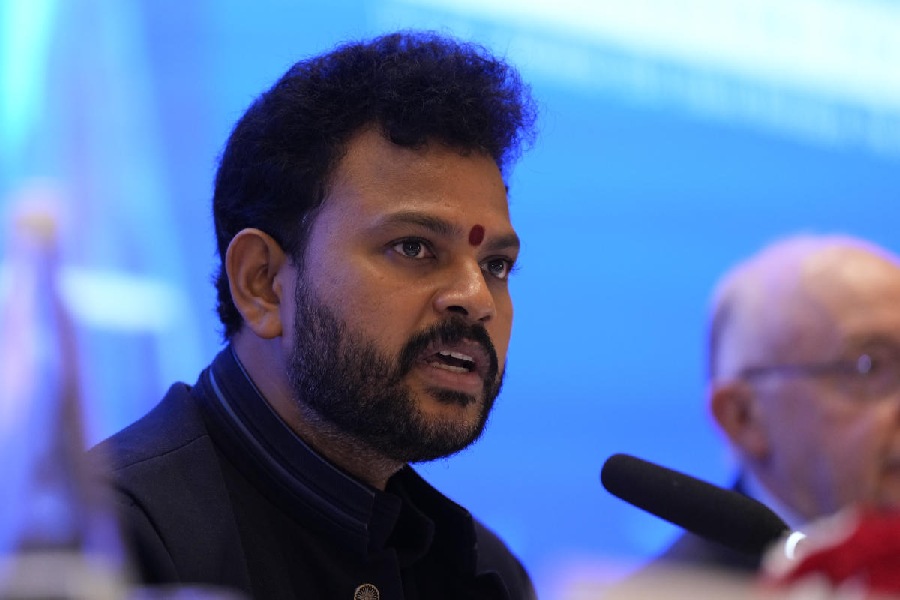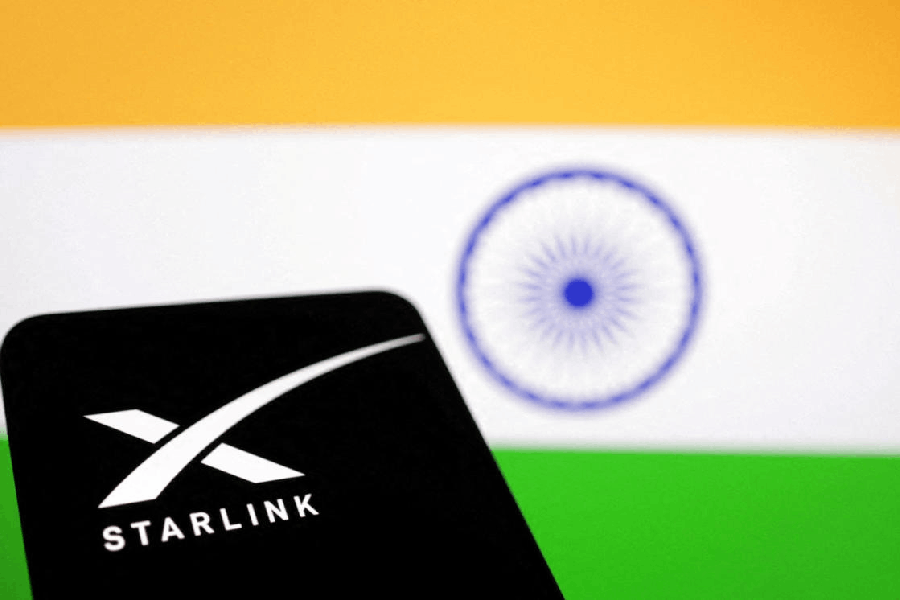|
|
Some weeks ago, The Telegraph carried a small item announcing that Toru Dutt was to be honoured at the French-government-sponsored International Francophony Festival of 2007. During her all-too-brief life, Toru had earned an international reputation as the author of A Sheaf Gleaned in French Fields, translations of over two hundred poems written by eighty French poets during the late eighteenth and early nineteenth century, including Victor Hugo, Sainte-Beuve, Gautier and many others. Detailed annotated notes accompanied the poems that were first printed in the Bengal Magazine, edited by the Reverend Lal Behari Dey. They were put together by Toru and published in 1876 by the Saptahik Sambad Press — two more editions being published posthumously, including the last in London by Kegan Paul and Co.
In it, she acknowledged the contribution of her older sister, Aru, who had died of phthisis in 1874. After Toru’s death, Ancient Ballads and Legends of Hindustan was published, based on her translations from the Sanskrit. More than that, in 1879, Le Journal de Mademoiselle d’Arvers, a novel, the first book in French written by an Indian and discovered by her father, appeared in Paris, and has recently been translated into English. In their brief lives, the girls had acquired fluency in English, French and spoken Bengali, the only language their mother knew.
Toru was born in Calcutta in 1856, daughter of Govin Chunder Dutt and a grand-daughter of Rasamoy Dutt. Govin and his family had become Christians. The children were exposed early to Western learning, foreign travel, English and French literature — and to letter-writing and the photograph. Govin Chunder held a respectable post in the government and spent much of his time with his family in Rambagan in north Calcutta and at their country home in Baugmaree (Bagmari, near present-day Shyambazar). In 1869, the family visited Europe, and Toru was admitted to a school in France, the only school that she ever attended. The sisters were the first Bengali girls to visit Europe, an experience that they would always draw enormous strength from.
Apart from being a talented littérateur, Toru was also an exemplary letter-writer, and took great pains over her epistles that read like fascinating diary entries. In 1871, the Dutts visited Cambridge and met the Martin family. Reverend John Martin was a vicar in the university town, and Toru and Mary, his daughter, became great friends, sustaining their relationship through an exchange of letters as well as photographs. In his Life and Letters of Toru Dutt (1921), Harihar Das, Toru’s biographer, writes that Mary had preserved all the 53 letters she had received from Toru between December 1873 and July 30, 1877, a few days before she died. Das had met Miss Martin when she came to Calcutta in 1913, carrying her friend’s letters with her. This works out to one letter in three weeks, and many were written over several days, ready in time to catch the next mail between Calcutta and London. Several of these have been reproduced in Das’s biography and provide a wealth of information on the life of an educated, articulate bhadramahila. As her biographer writes, Toru’s “graphic pen” captures the smell, texture and taste of Indian fruits, the aroma of heady flowers and her love for animals. And the persistent ill-health of a family that lost all its children within five years of each other.
Toru longed to go back to England — a continual theme in many of her letters. For her, it signified a freedom away from the constraints of the restricted life of a Christian bhadramahila. But, she added, her maternal grandparents wouldn’t hear of their return. Her grandmother, she wrote, “is, I’m sad to say, still a Hindu, but she is so gentle and loves us so much”. Yet, Toru kept planning and hoping, so much so that she dissuaded her father from buying a carriage and a pair of horses, for if the family was “entramelled in Calcutta by equipages and gardens, we shall never be able to go to Europe again”. She never did go back to Europe — but died of tuberculosis on August 30, 1877.
The correspondence between Toru and Mary Martin is more in the nature of an elaborate journal, amply enlivened by photographs. For Toru, her letters were an outlet of emotions that she felt sure Mary would understand. Clearly, the Dutts were regular and discerning patrons of photographic studios — even sending for a photographer to come to the house and take images of Toru’s beloved horses, Jeunette and Gentille. In a letter of September 10, 1875, Toru expresses disappointment that the hardness of the envelope from Mary did not reveal a carte de visite portrait of her friend: paper prints from glass negatives roughly 4” x 2” in size — the same as visiting cards of the times. The cartes de visite’s convenient and cheap size made the photograph an exchangeable commodity amongst family and friends. She writes to her friend that she will send her photographs of the Garden and Garden House and also of the Calcutta home in Rambagan. The one she had “has turned out (sic.) such an ugly one that I do not care to send it to you”. Toru was obviously displeased with what the photographer had produced and demanded another session.
Finally, the long awaited photograph arrives in February 1876, and it was duly placed in Toru’s album. Mary did not visit her friend during her lifetime — but was able to have a mental image of the Baugmaree house based on Toru’s very competent description of it, tallying this with a photograph that she had sent to Mary. Though, by this time, portrait painters were losing ground to photographers, some still preferred the detail and patience of the artist. Toru’s father’s younger brother’s wife spent many hours with portrait painter Bagchi, and she was curious to see how it turned out. While their mother wore a sari with a bonnet-like headdress, both sisters usually dressed in gowns and dresses. Here, in a photograph taken perhaps in Cambridge, 1870, Toru wears a heavy gown, the bows, jabots and frills at different levels of the skirts a true reflection of European styles of the decade.
All the while, Toru was learning Sanskrit, whose grammar she found “awfully difficult”. Though the sisters had been to school in France, in Calcutta they were tutored at home by Babu Shib Chunder Bannerjea, “an elderly man of exemplary Christian piety and character”. This limited her interaction with other girls of her age and class and also perhaps enhanced her sense of alienation as Hindu members of the Dutts of Rambagan seemed not to mix with the Christian bari, as they were known, the exception being Romesh Chunder Dutt, her father’s cousin. Her mother’s family appeared to have remained staunchly Hindu, and even at marriages, invitations were not extended to the pagan wing! Among other things, that the girls had no thought of marriage but spent their time reading and writing was perhaps a cause of intense disapproval. However, Toru remained close to her mother’s brother and his family, despite the fact that they were so very different, practising among other things, child marriage.
Govin Chunder Dutt was indeed a brave man, to have supported his daughters and not thought of marriage for them — though, clearly, the fact that her parents were asked with unfailing regularity about the matrimonial prospects of their daughter bothered Toru enough for her to write to Mary about it. “Marriage, you must know, is a great thing with the Hindus,” she wrote on May 3, 1876. “An unmarried girl of fifteen is never heard of in our country.” Her grandmother’s friends first asked if she was married, a scandalized silence following her reply. Had she not died just after her 21st birthday, her father would surely have broached the question of marriage. That a bridegroom may not have been easy to find for this talented young woman, whose Sheaf had been reviewed in over two dozen publications worldwide, goes without saying. Or maybe, like others in the extended family (including Rajni Palme Dutt’s father), she may have sought a life partner abroad — for Toru Dutt was as European as she was Bengali.











